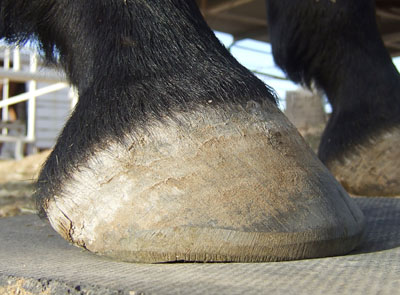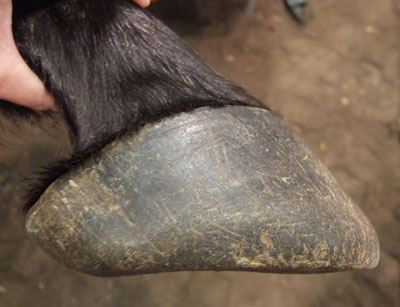WHAT DO I FEED AND HOW MUCH?
"I think this is a very big question and a good topic for anyone to study."
So first lets look at what God intended horses to eat and how much. Well horses are a "Herbivorous Animals" which means they eat plants. They are also a grazing animal which means they eat continuously. So horses in the wild mainly eat grass and plants. With this in mind we will look at what to feed domesticated horses.
Ok so maybe you have less pasture and more stalls, or maybe you have paddocks instead of fields and don't have the grass for a horse to thrive on. How will you feed it and what.
Here are some things that you can feed your horse...
*Roughage is the most important thing for your horse. It is good for their brains. Without enough forage your horse can develop habits that will simulate grazing, like chewing on trees or fence.

This in which can kill your trees and will take money to fix your fences. This is usually the case of little fiber or boredom. So if you feed good forage and not cheap stuff, you will end up feeding less. It's like us eating white bread, it doesn't make your hair shine! Hay with to much lignon in it will make your horse too full and they will waste it. Feeding a quality hay like alfalfa will cost less because it is natural for the horses and they can digest it better.
*Grains
Horses that are "Ribby and have no topline, but huge bellies are lacking sufficient protein.

Some have said protein makes horses hot, but this is not true.
Horses that are "Ribby" and have no topline, but have huge bellies, are lacking sufficient protein.
Young horses need higher protein for the development of bone and muscle. This is Amino Acids. This offers the building of bone and muscle that horses need. Without is the result of the picture above, where the horse has no muscling, especially over the topline and the cheap hay or feed is just making him full, not giving him the right protein and nutrients. Adult horses need 8 to 10% protein in the total ration and more is needed for working, lactating, young and senior horses.
Grains aside of good hay will get your horse looking healthy and fit. So lets look at some natural grains for your horse.
*Oats

Oats have been the first choice of feeds. They are medium in energy, require little or no processing and have more protein than most grains. Oats are the most nutrient balanced grain. Oats are thought to aid the milk production of lactating mares. Oats have 47-53% starch, less than other whole grains. This is more digestible than the starch in corn or barley and less likely to cause problems like colic and founder. Oats are considered the safest grain. Though because oats increase blood sugar, horses with cushing or gastric ulcers should not be fed them.
Whole oats have about 11-13% protein and 5% fat. Hulless oats contain 27% more protein and 49% fat than whole oats. Hulless oats offer more than hulled when it comes to amino acids. Because hulless oats contain more digestible energy than whole oats, you will feed a 1/4 less. Hulless oats are a natural horse grain, since the oat itself has an envelope not a hull. When it is ready to be harvested the envelope falls off.
Buying crimped or rolled oats cost more and only improves digestibility by 3-5%, where hulless oats are natural for horses and easy to digest and chew, since there is no hull. Iv'e heard purchasing the USDA Grade 1 Oats is the way to go!
*Corn

Corn is used in a lot of feed and horse mixes. Though there is concern for colic and founder, so I have stayed away from this grain.
*Barley

This grain is natural, but is less palatable than oats or corn and is more expensive.
*Comercial
There are comercial grains as well that are good if you don't want to mix your own. Though it may be more expensive, you would just have to research your options. Some may include Strategy, Ultium, Cavalor, Purina Equine and so many more.
So here are some grains. Looking at the digestibility, protein content and cost and everything, it looks like Oats are a number 1 hit for equines. But do I just feed oats alone?
Ok so your feeding plenty of good quality roughage and hulless oats and your horse still is needing a little extra wait. I would use "Beet Pulp". It adds fat and is natural for your horse to eat.

Beet Pulp cannot be fed dry, because they can't digest it. Soak it in water for a minimum of 3 hourse "I just soak mine over night" and it is highly digestable.
*Minerals

I also throw in a mineral scoop of loose minerals in there grain once a day, to make sure they are getting the salt and minerals they need.
*Add Some SHINE

A good way to add shine to your equines coat is to add about a table spoon of vegetable oil to there grain once a day. This will also add some fat to there diet.
*HOW MUCH DO I FEED

First some rules for feeding.
You should feed according to your horses height, weight, temper and work load.
Roughage should be 1% of their body weight. You should balance the amount of protein in your grain to the amount in your hay.
Some examples:

A quarter horse gelding that does trail riding and is on rich pasture, may only get a small amount after work to replace what he lost, such as 1lb hulless oats, 1/2cup soaked beet pulp, 1/4cup loose minerals.

A thoroughbred that is in full dressage training and is stalled, may get unlimited good quality hay, turn out for 2 hours a day and in the morning a mix of 2lb hulless oats, 1cup soaked beet pulp, 1/4cup loose minerals and 1tbsp vegetable oil and in the evening just 2lb of hulless oats.
Roughage is the biggest thing and while this may work for the quarter horse and the thoroughbred, you will have to find out what works best for your horse. It is a good idea to consult your veterinarian before you try switching your horses feed and if you do switch feeds, give your horse plenty of time to adjust to the new grain and slowly switch over a couple weeks.
Hope this is helpful:) Trot on!









 Now
Now
 Now your horse is warmed up and ready for your schooling. Remember to keep him forward thinking and have fun:)
Now your horse is warmed up and ready for your schooling. Remember to keep him forward thinking and have fun:) This in which can kill your trees and will take money to fix your fences. This is usually the case of little fiber or boredom. So if you feed good forage and not cheap stuff, you will end up feeding less. It's like us eating white bread, it doesn't make your hair shine! Hay with to much lignon in it will make your horse too full and they will waste it. Feeding a quality hay like alfalfa will cost less because it is natural for the horses and they can digest it better.
This in which can kill your trees and will take money to fix your fences. This is usually the case of little fiber or boredom. So if you feed good forage and not cheap stuff, you will end up feeding less. It's like us eating white bread, it doesn't make your hair shine! Hay with to much lignon in it will make your horse too full and they will waste it. Feeding a quality hay like alfalfa will cost less because it is natural for the horses and they can digest it better.




















